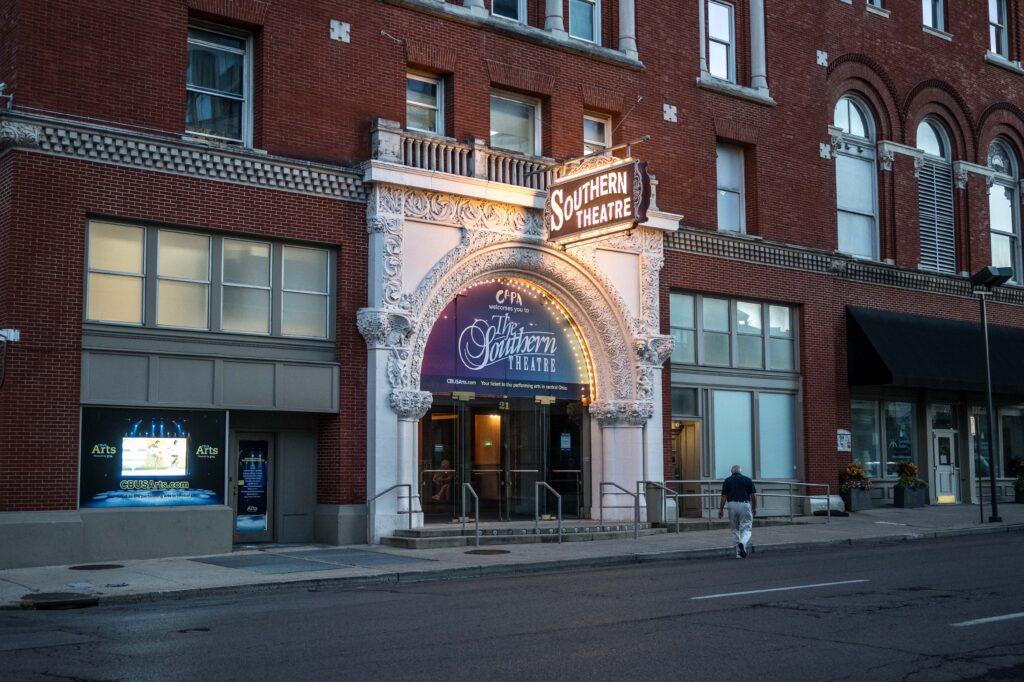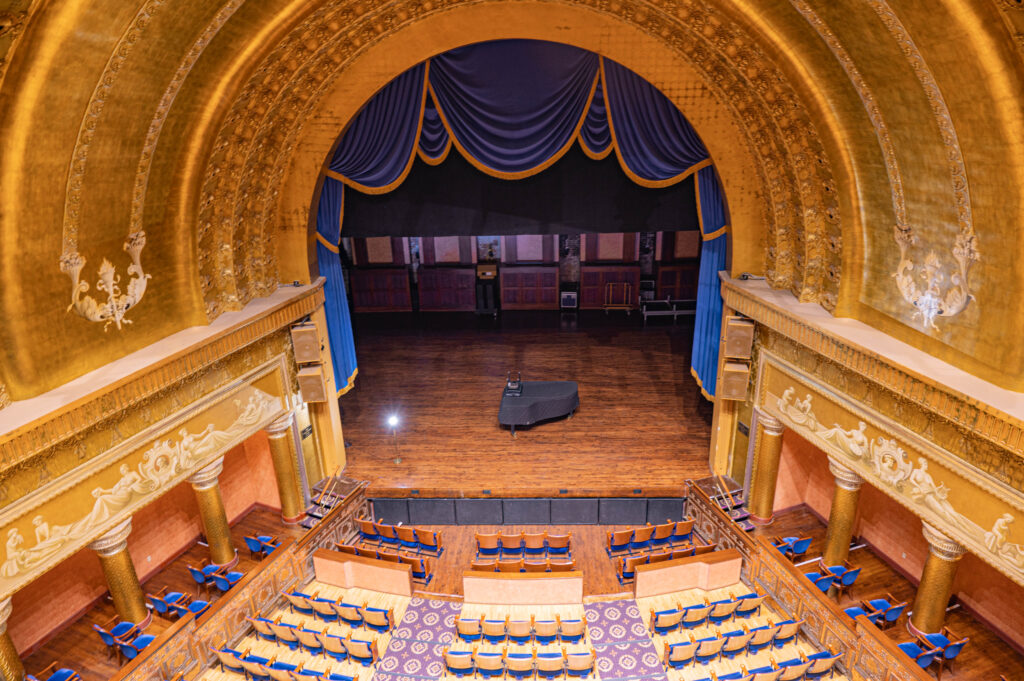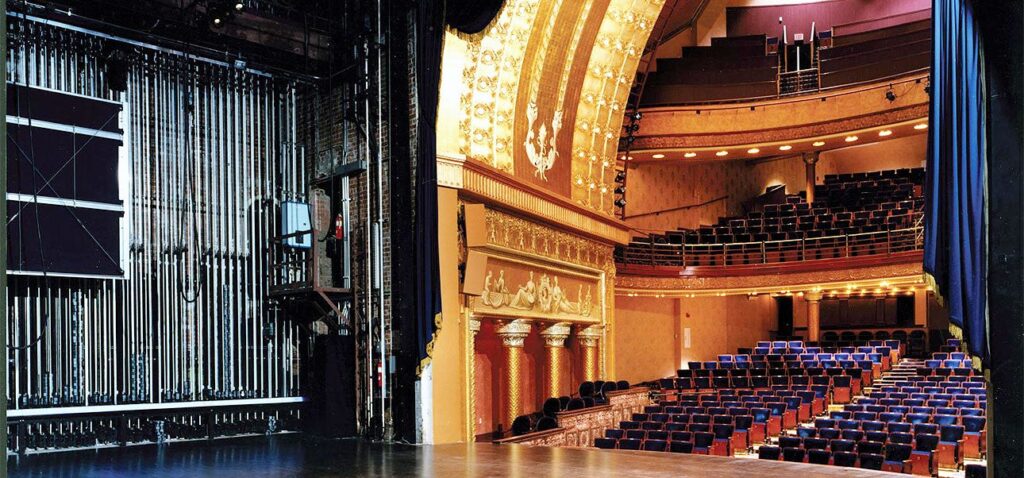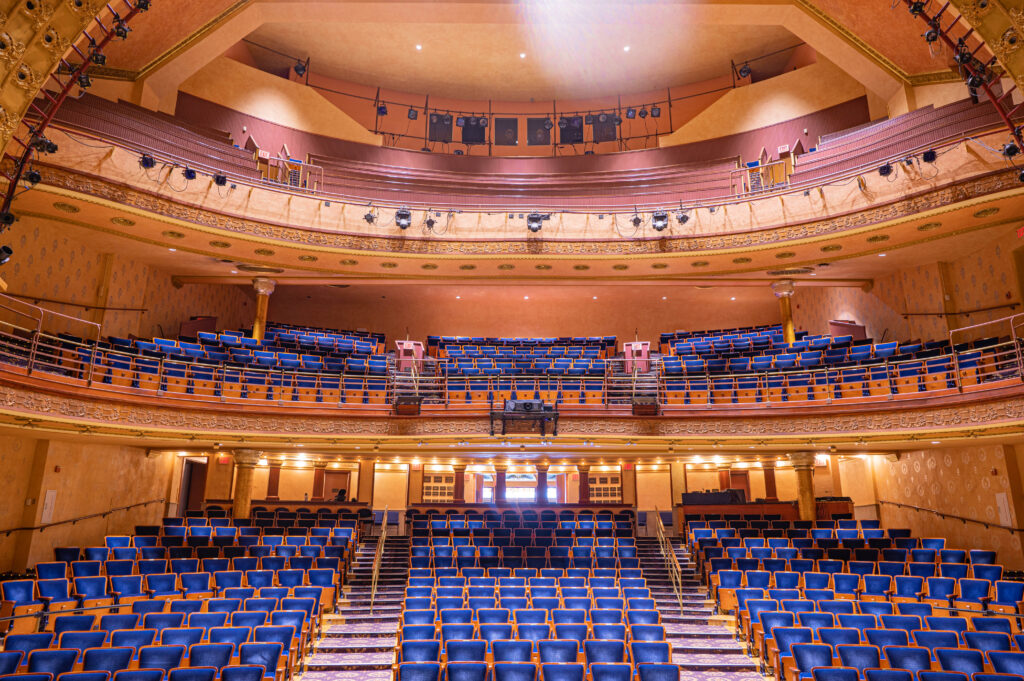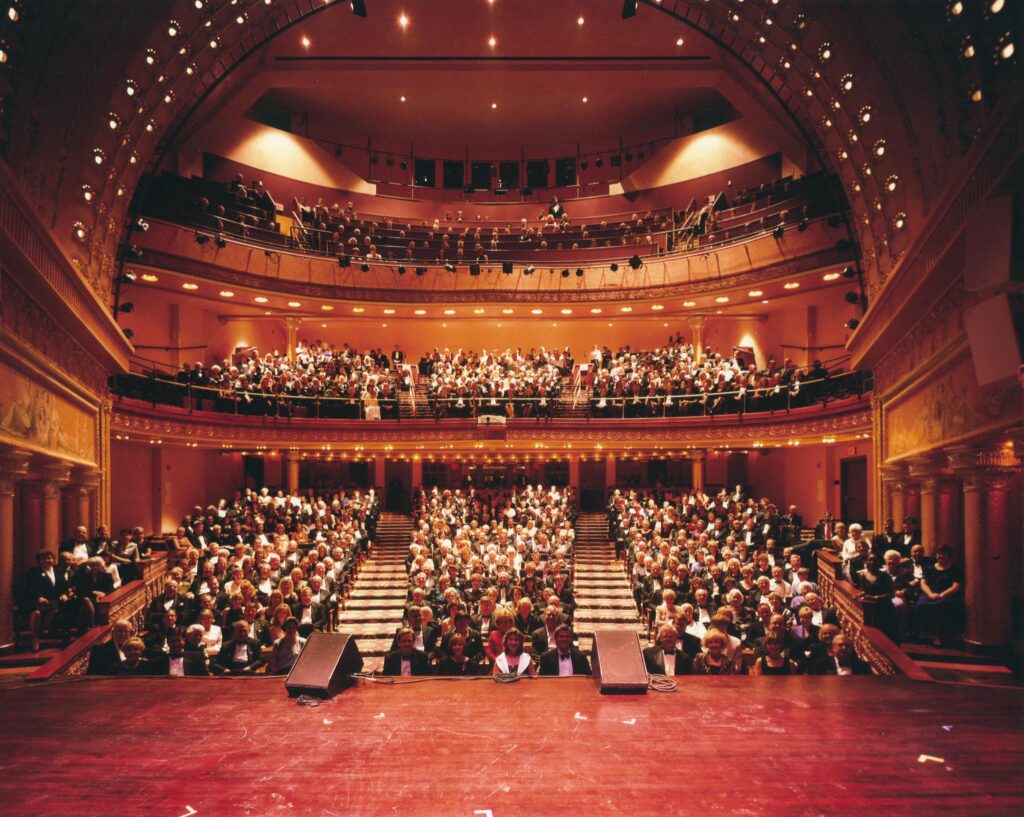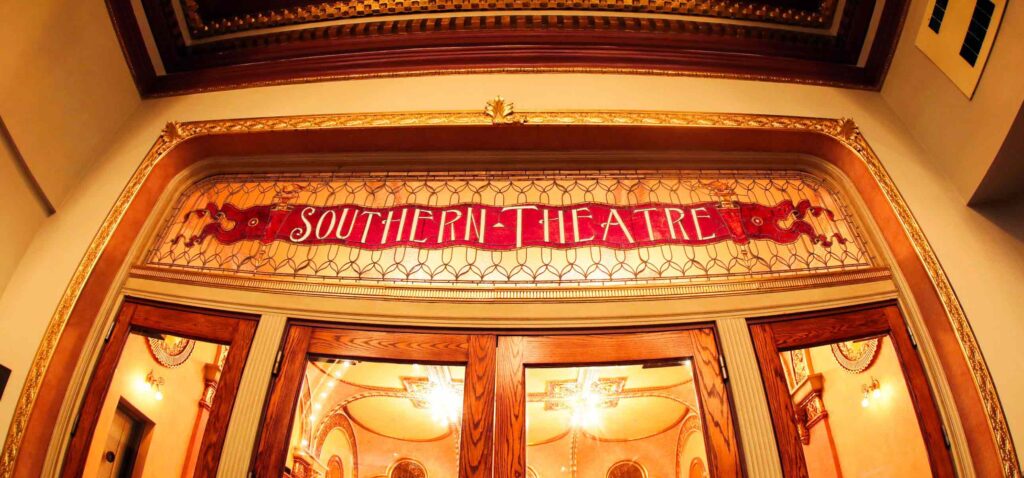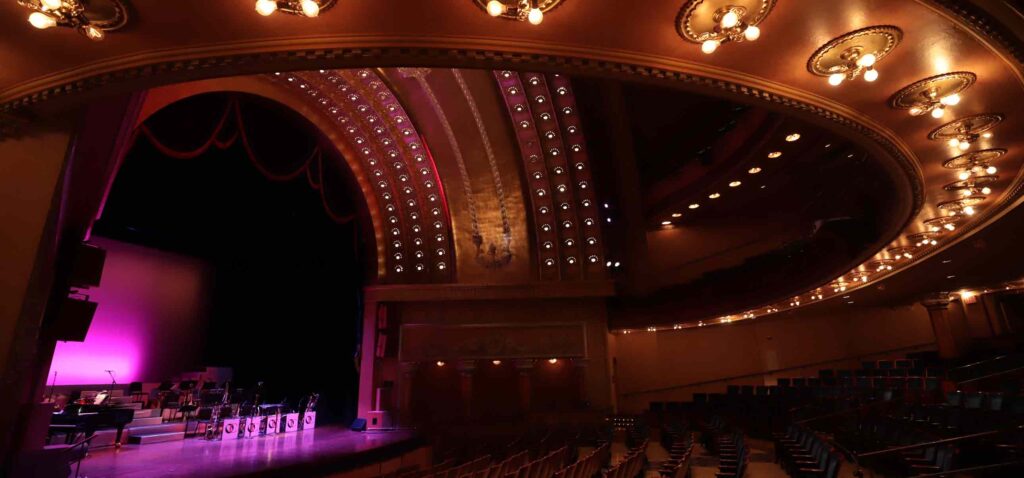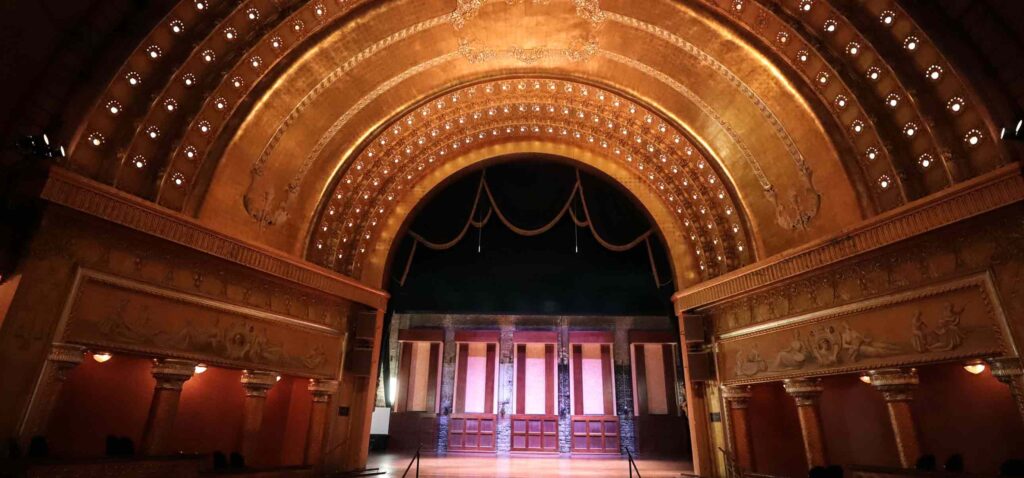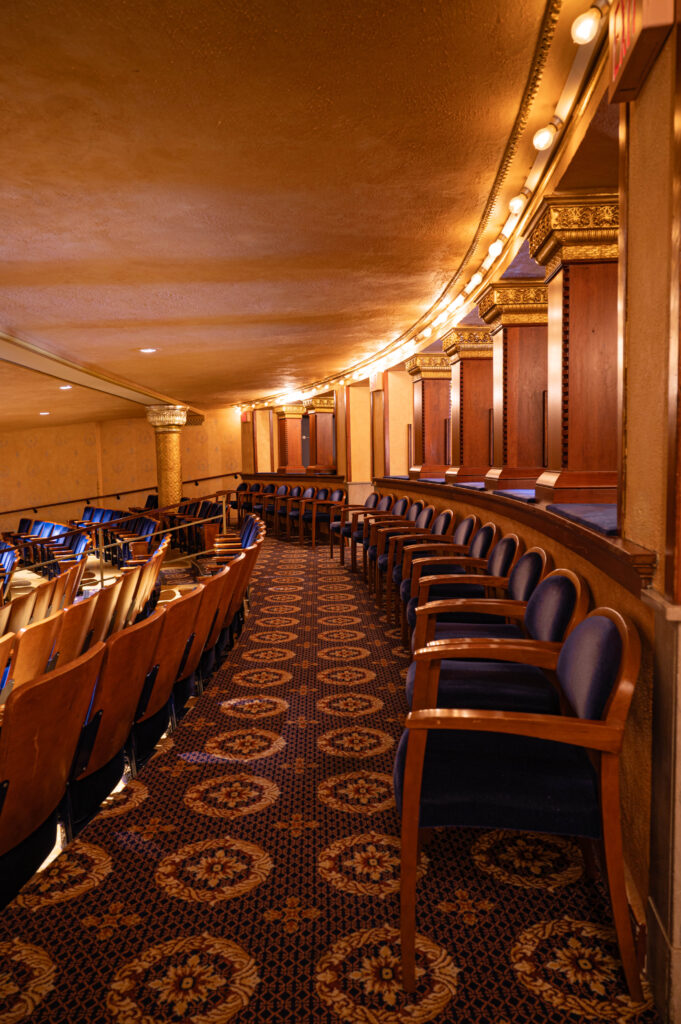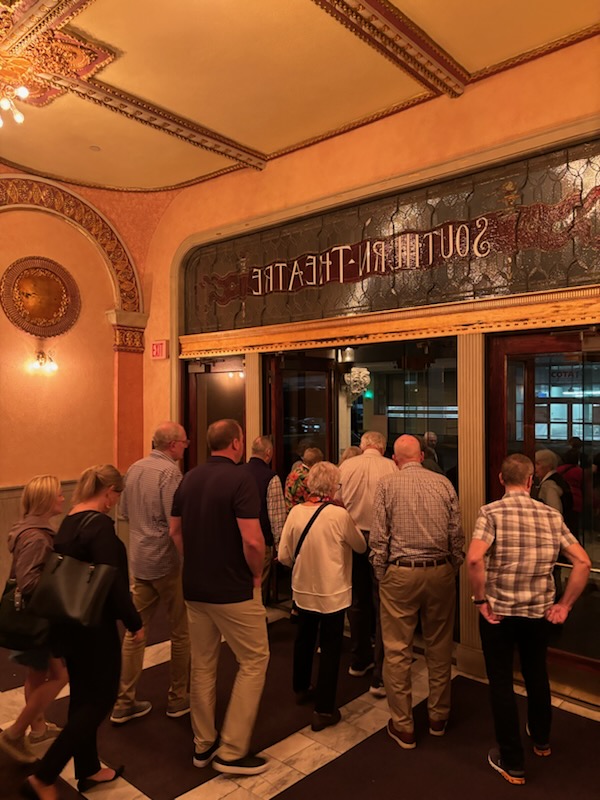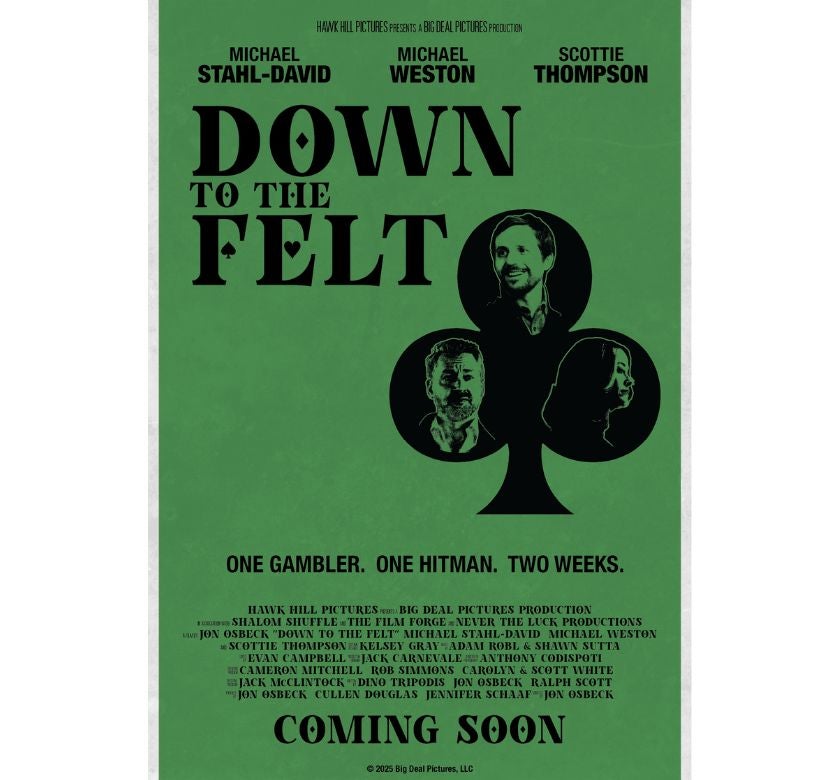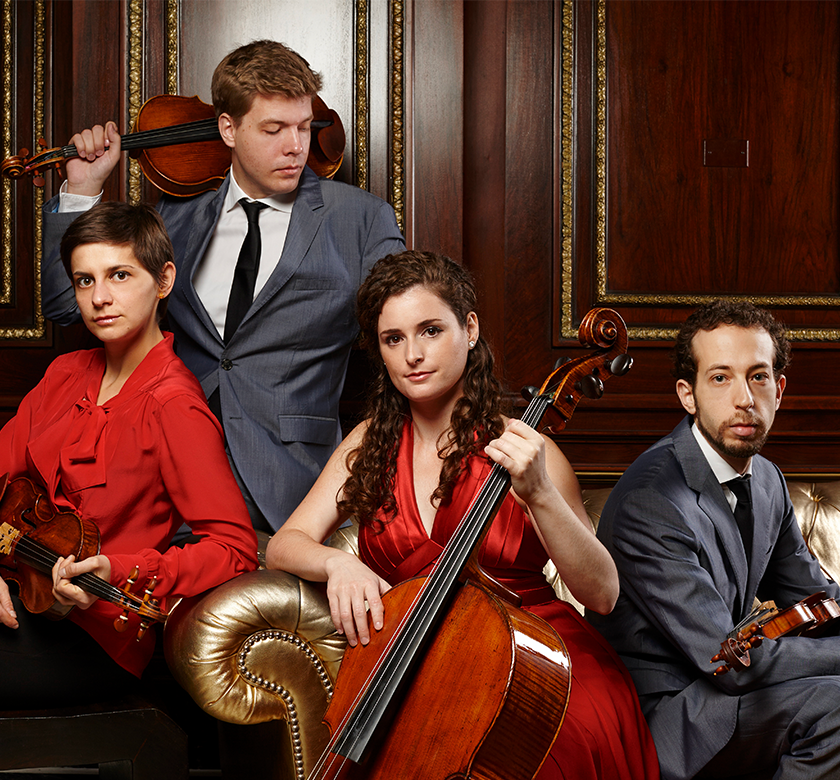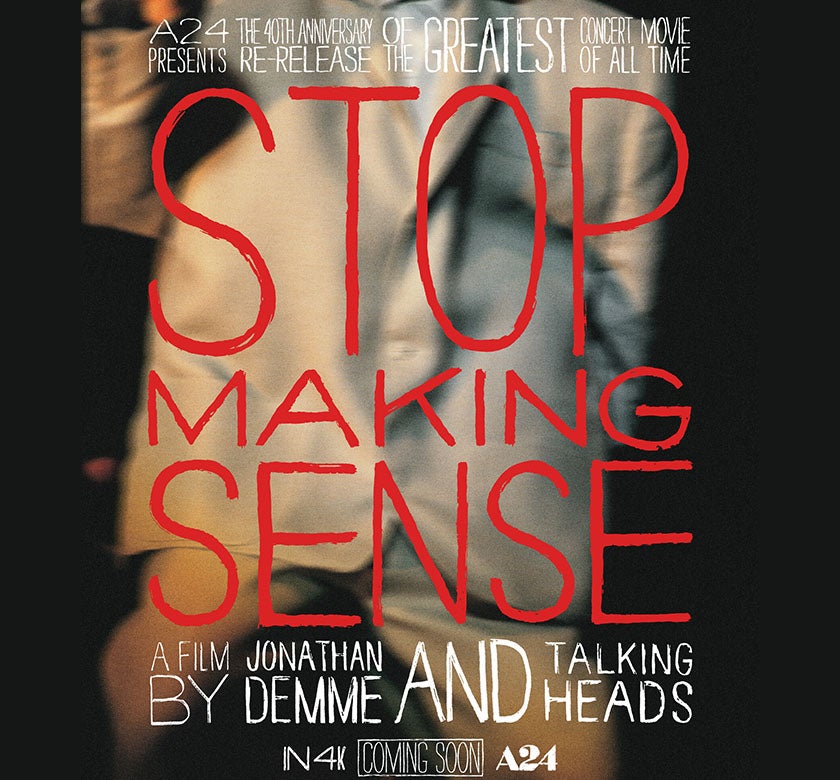Southern Theatre
Directions
From the North
Take I-71 South, then merge onto I-670 West toward Dayton (exit 109 A). Take exit 4B for US-23 South/Third Street. Continue on 3rd Street. Turn right on Rich Street. Turn left on High Street. Turn left on E. Main Street. Enter Columbus Commons parking on the left. (Southern Theatre signs are posted inside the garage.)
From the South
Take I-71 North to OH-3 North/US-62 East/West Rich Street. Take exit 1A from OH-315 North. Use the right 2 lanes to take exit 55 to merge onto I-71 North toward Columbus. Use the middle 2 lanes to take exit 106 for OH-315 North toward Worthington. Continue onto OH-315 North. Take exit 1A for US-62/OH-3/Rich Street toward Town Street. Drive to W. Main Street.
From the East
Take I-70 West to Fourth Street exit. Travel North (right) to Rich Street. West (left) on Rich Street to Columbus Commons parking on left.
From the West
Take I-70 East to High Street exit. Travel North (left) on High Street to Main Street. Turn East (right) on Main Street to Columbus Commons parking on left.
Parking
Columbus Commons Main Garage
Entrances are located on E. Main Street and E. Rich Street. Cash and card are accepted. Find more Information here.
55 E. Rich Street
Columbus, Ohio 43215
Phone: 614-461-4454
More Parking Options
For more parking options visit the Downtown Columbus website.
Looking for something else?
Explore a variety of local restaurants, hotels, and more.
Theatre Accessibility
- Booster seats: Available for our youngest patrons on a first-come, first-served basis. Please ask a house manager upon arrival at the Southern Theatre. Inventory is limited.
- Accessible seating: Located in row S of the orchestra.
- Elevators: Not available at the theatre.
- Stairs: Required for seating in the orchestra, loge, mezzanine, and second balcony (all seating besides row S).
- Accessible restrooms: Located to the left after entering the lobby and passing the mezzanine stairs.
- Audio description & ASL services: Available upon request by contacting access@capa.com.
- Listening devices: Located at the entrance. Please ask the house manager for assistance (ID or credit card may be required).
- ListenWiFi (formerly known as ListenEverywhere): Use your phone for assisted listening with the ListenWiFi app. Download for Google or Apple.
- Wheelchairs: Complimentary wheelchairs are available in the coat check area.
- KultureCity locations:
- Quiet Area: Located in the front lobby of the Southern Theatre.
- Headphone Zone: Theatre area is considered a headphone zone.
- Sensory Bags: Please ask a House Manager for a Sensory Bag at the front entrance of the theatre; an ID or credit card may be required to be held during your use of the Sensory Bag.
- View KultureCity page here.
The oldest surviving theatre in central Ohio and one of the oldest in the state, the Southern Theatre opened in 1896 as part of a performance space and hotel complex on the corner of High and Main Streets. The Southern was designed for the presentation of theatrical touring productions, and later also accommodated silent films, vaudeville, first- and second-run motion pictures, dance, country music reviews, and community events.
Southern Theatre History
The Great Southern Fireproof Hotel and Opera House
After fire destroyed five downtown theatres between 1889 and 1893, an assembly of businessmen decided to enhance the city’s south side with a new-and-improved, fashionable hotel. Designed by the prominent local architectural firm of Dauben, Krumm, and Riebel, construction on the Great Southern Fireproof Hotel and Opera House began in 1894.
The Southern Theatre opened on September 21, 1896, and the hotel the following summer. Constructed of “fireproof” tile, brick, iron, steel, and concrete, the theatre — which originally seated 1,723 on three levels — was praised for its plush seats, stylish boxes, excellent sight lines, and absence of posts or other obstructions. Its ample stage dimensions proved more than up to the challenge of the 1903 touring production of Ben-Hur, which featured a cast of 350 and a chariot race in which two teams of horses galloped on treadmills for a mile!
A Modern Facility
The Southern Theatre departed from the classical opera house by incorporating features considered very “modern” for its day. Most notable was the design of the audience chamber ceiling. From the proscenium opening, a series of concentric arches radiate into the house, creating an acoustic system that is still nearly perfect today.
The Southern Theatre was also one of the first commercial facilities in Columbus to use electricity. The six arches that fanned out over the orchestra were lined with light bulbs—204 lamps in all! Tinted globes shaded the bulbs, giving the effect of warm, diffused light over the entire theatre. Ahead of its time, the building had to generate its own electricity and also produce its own water supply from three wells in the basement.
Opening Night
The Southern’s grand opening entertainment was the Broadway touring production of In Gay New York, followed by An American Beauty starring Lillian Russell. During its early years, the greatest names of the theatrical world played the Southern, including Ethel and Lionel Barrymore, John Philip Sousa, Sarah Bernhardt, Al Jolson, and W.C. Fields. Actress Maude Adams flew from the stage to the balcony in an early production of Peter Pan and dancer Isadora Duncan refused to play Columbus unless she could play the Southern!
Changes for the Southern
By 1901, the Southern was still struggling to cover the cost of its construction, said to have been approximately $1.5 million. Fred and Ralph Lazarus stepped in, purchasing the property at auction for $235,000. The brothers oversaw many renovations, including the installation of a projection booth and the removal of the first several rows of the arches so the newly installed pipe organ could be heard from behind. By 1931, the Southern was a full-time movie house.
After decades of increasing maintenance issues, the Lazarus family sold the facility to a realtor who planned on turning it into an apartment building and garage. It never came to pass through, and in 1979, the Southern Theatre was closed.
Rebuilding the Legend
In 1982, the Great Southern Hotel and Theatre were purchased by local developers who wanted to renovate the hotel. In 1986, property owners Bill and Barbara Bonner made a gift of the Southern Theatre to CAPA, which undertook a feasibility study in 1990 to determine the nature and scope of the renovations needed to bring it back to life.
Like the campaign that saved the Ohio Theatre nearly 30 years prior, the public drive to support the restoration of the Southern Theatre was wide-ranging and embraced both the public and the private sector. The State of Ohio provided leadership funding in the public arena, contributing $3.9 million appropriated in three separate biennial budgets, and the City of Columbus provided more than $670,000 in UDAG funding for the effort. Private support made up 58% of the $10 million project’s total funding, with major support from 73 central Ohio businesses, local and national foundations, and more than 250 individuals.
On September 26, 1998, following an intensive, 14-month CAPA-led restoration, the 925-seat, jewel box Southern Theatre was reopened, providing a beautiful, accessible, and lively link to our community’s past and its bright future.
A New Era
Today, in addition to CAPA-presented concerts and performances, the Southern Theatre is home to Opera Columbus, the Columbus Jazz Orchestra, Chamber Music Columbus, and the ProMusica Chamber Orchestra.

